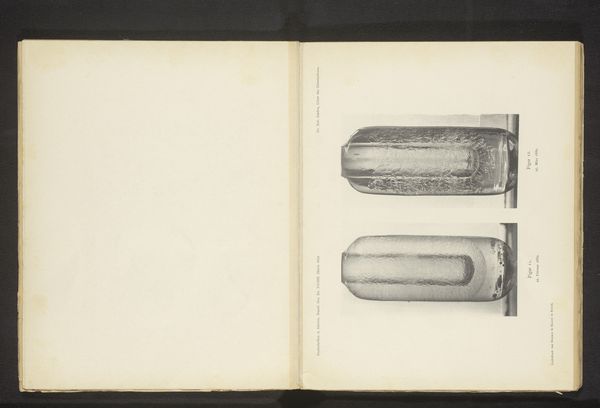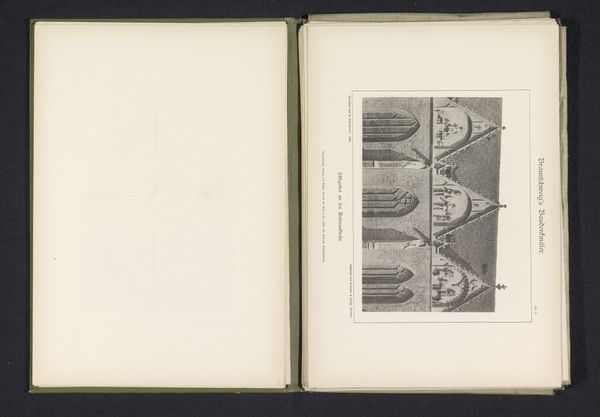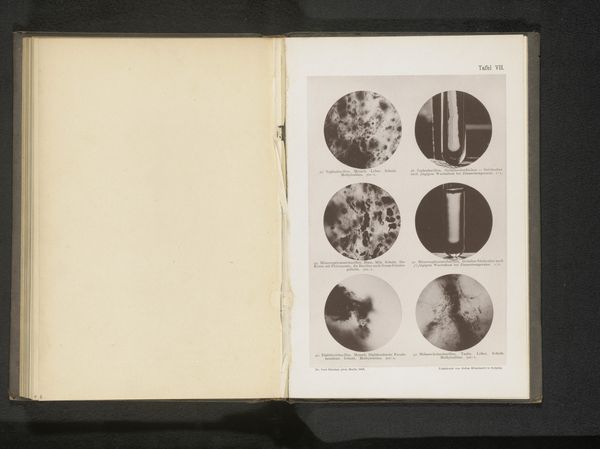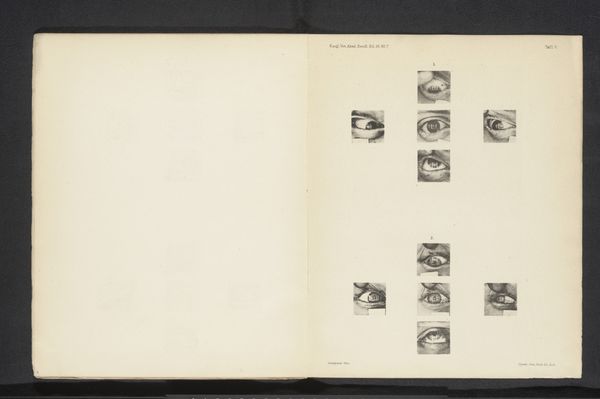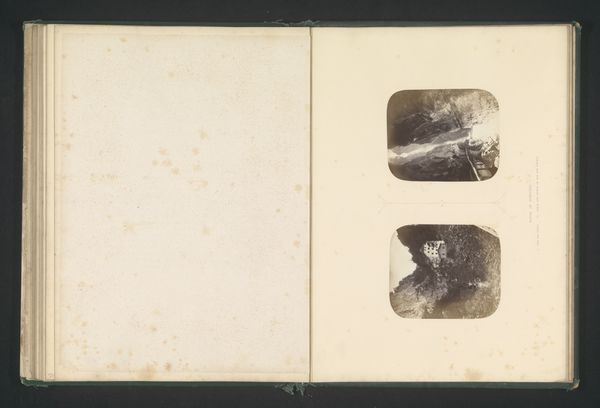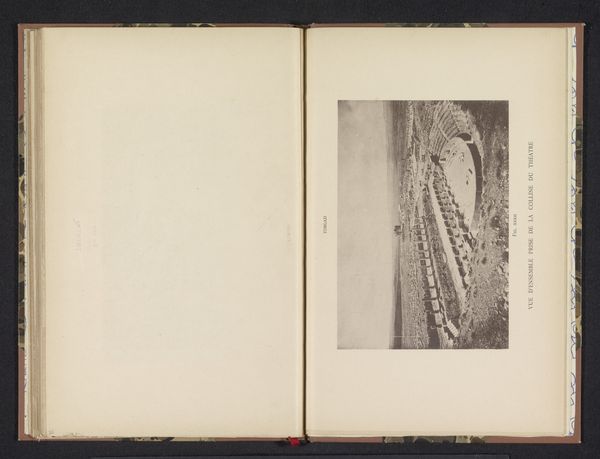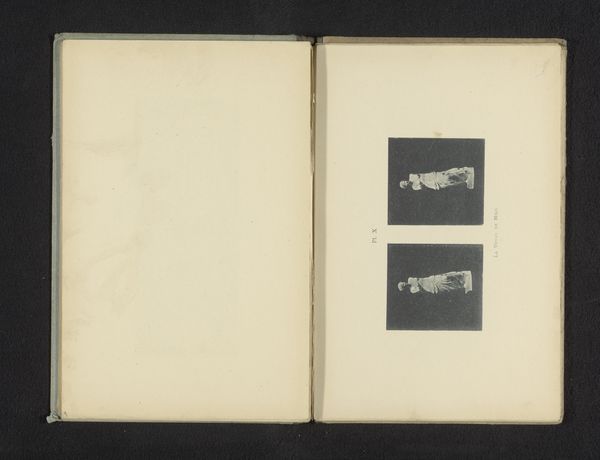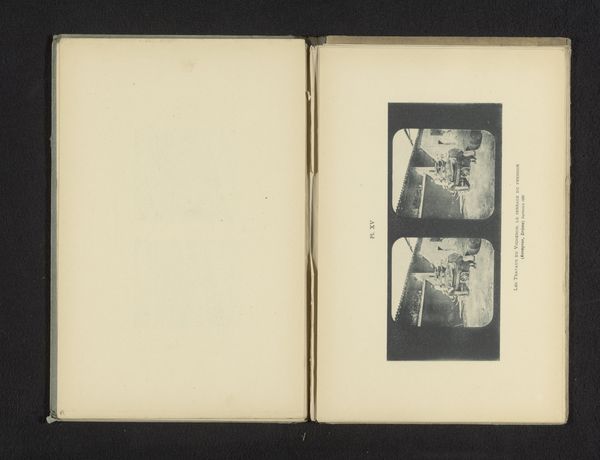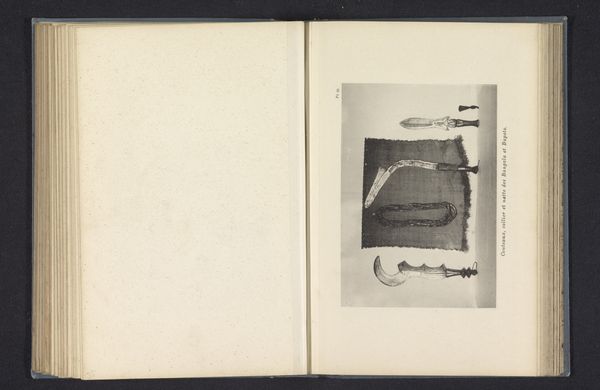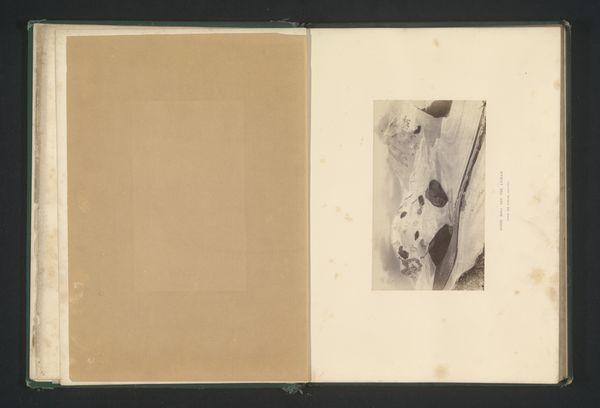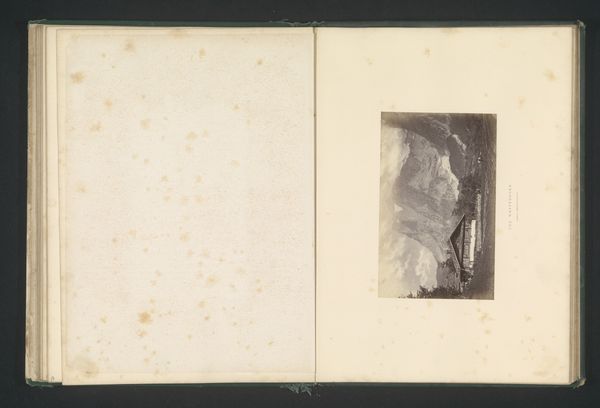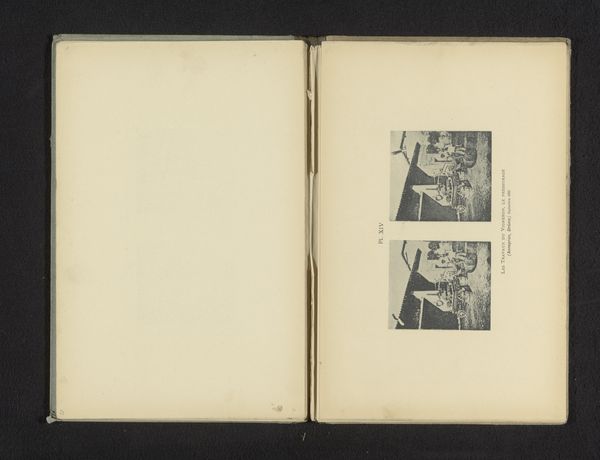
print, photography
# print
#
photography
#
history-painting
#
realism
Dimensions: height 109 mm, width 161 mm
Copyright: Rijks Museum: Open Domain
Curator: Here we have a print entitled "Vier schilden van de Ngbandi," or "Four Shields of the Ngbandi," dating to 1896 and attributed to Franz Thonner. What strikes you initially? Editor: My first impression is of meticulous cataloging. These shields appear flattened and pinned, like butterflies in an entomological display. I’m interested in what materials we are looking at, what this inventory was trying to achieve? Curator: Indeed. There’s a clear ethnographic intention here, but I’m drawn to the shields themselves. Note the intricate designs—geometric patterns, an almost skull-like image on one—each speaking to unique cultural narratives and potentially protective symbolism within the Ngbandi society. The very act of portraying shields, traditionally tools of defense and power, becomes a symbolic act of its own within the colonial context of the time. Editor: Precisely, but how did they make them? Looking at the variations, you can see a different way each was produced—were these for show or functional use? And how much say did the subjects have? Curator: That's an excellent point. The shields' aesthetic presentation seems to merge utility and ritual, echoing how power and spiritual protection are visualized in everyday life. Do you see cultural objects appropriated and recontextualized for Western consumption, to reinforce a European perspective? Editor: It definitely appears like we can analyze them less for protection and warfare, and more as commodities within a specific cultural exchange that reveals social dynamics around objectification. I wonder about the hands involved – from crafting to capture to documentation? Curator: Precisely. Understanding the object and act of documenting opens into a larger history. These aren't simply shields, but a captured moment of interaction of colonial ethnography. Editor: I appreciate the historical perspective, recognizing that these objects serve now as valuable entry points to the study of colonialism and material culture under shifted dynamics.
Comments
No comments
Be the first to comment and join the conversation on the ultimate creative platform.
